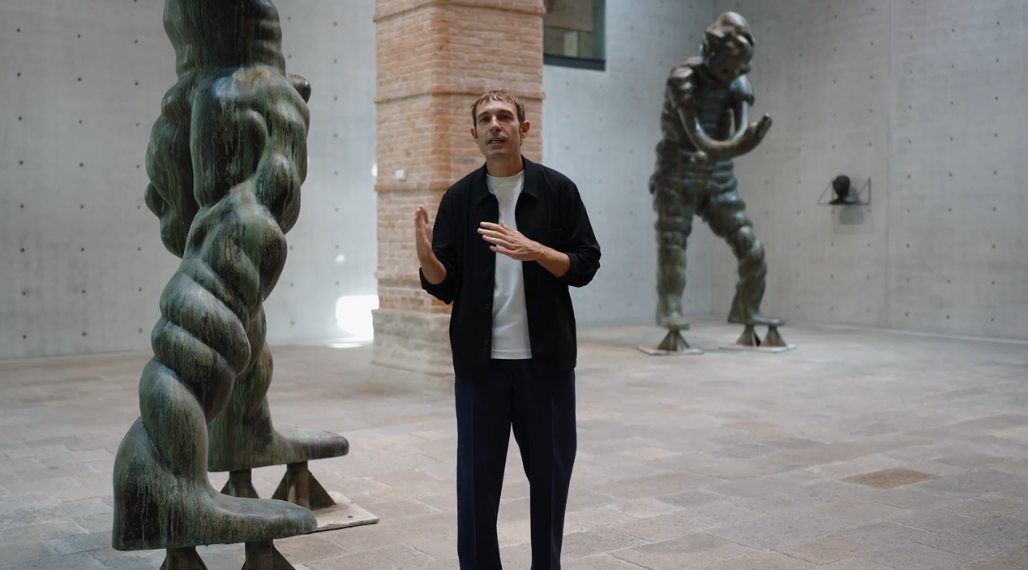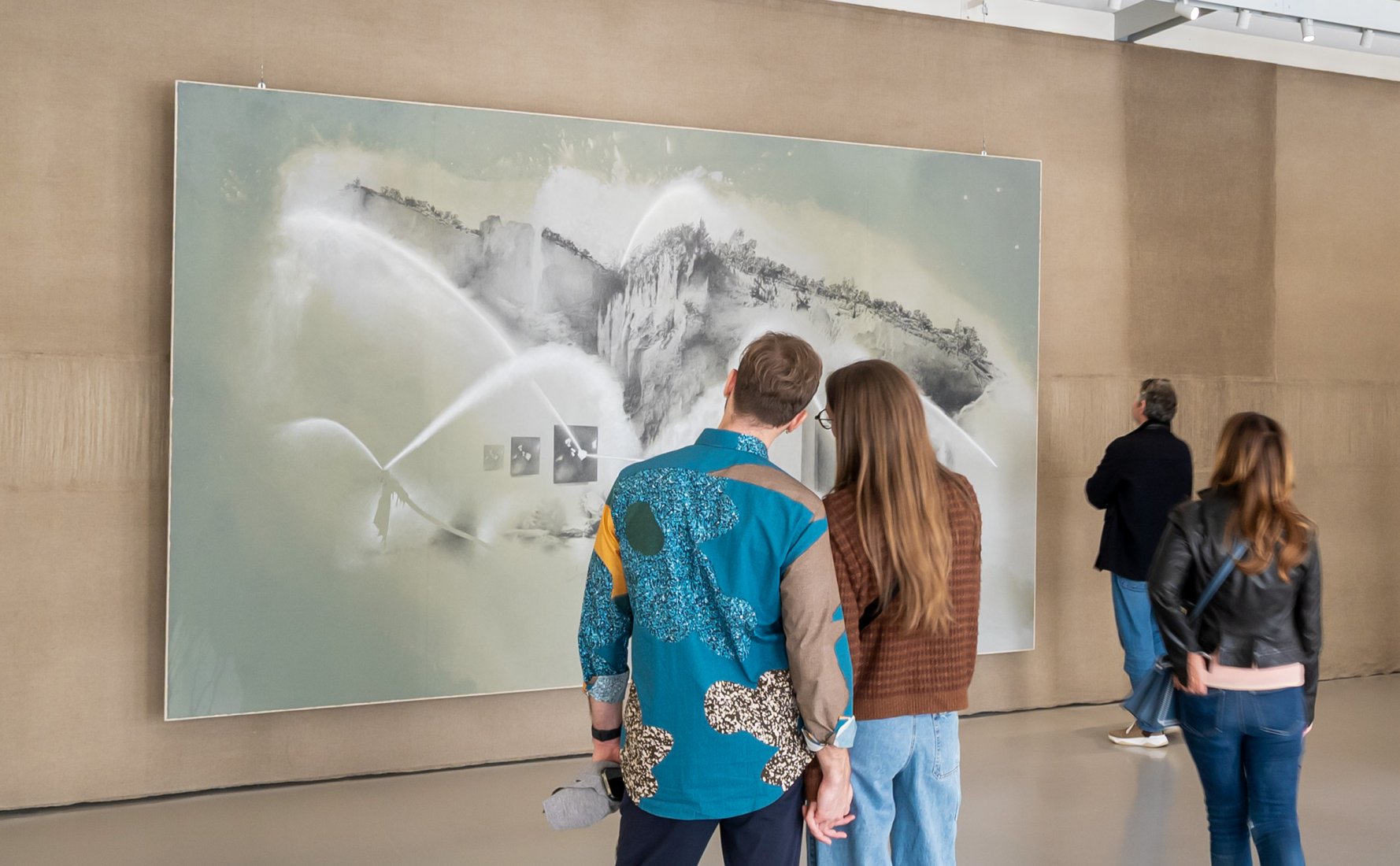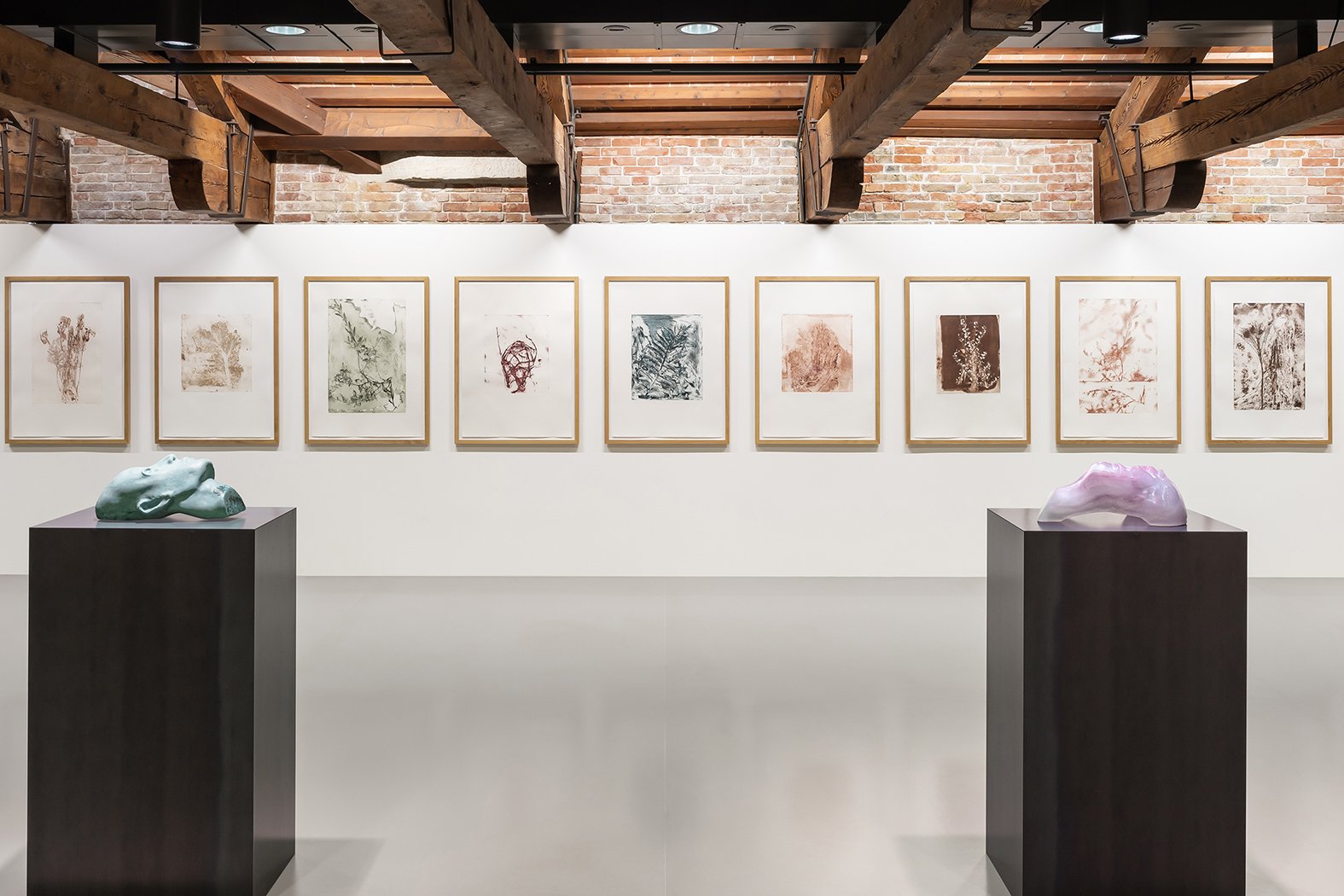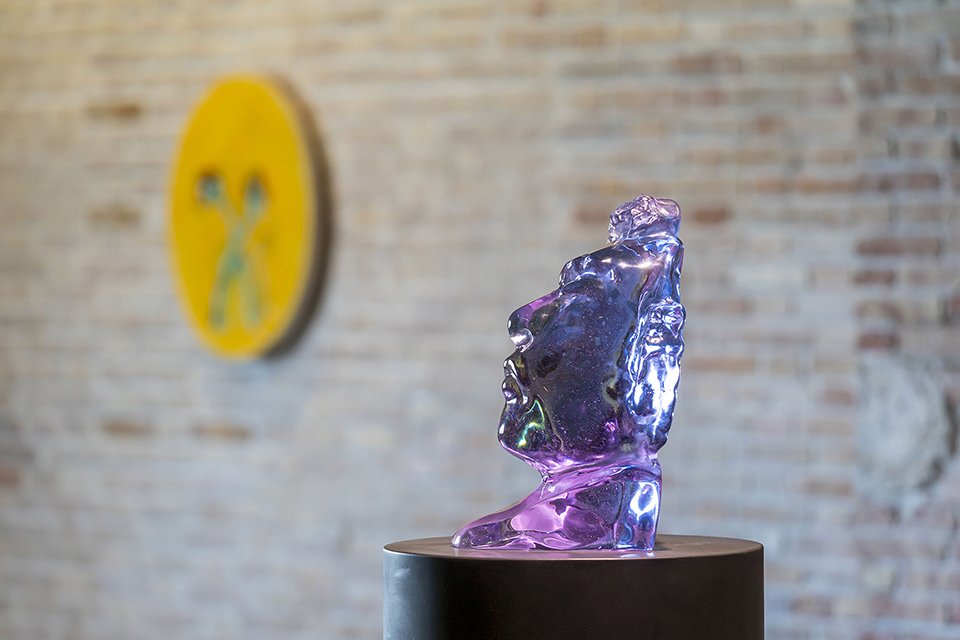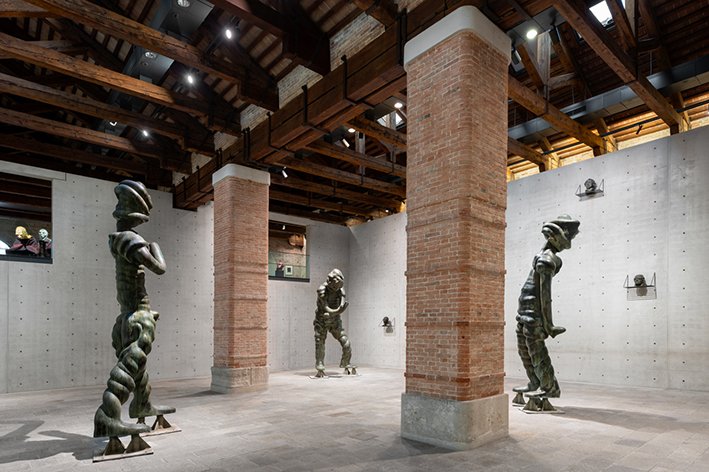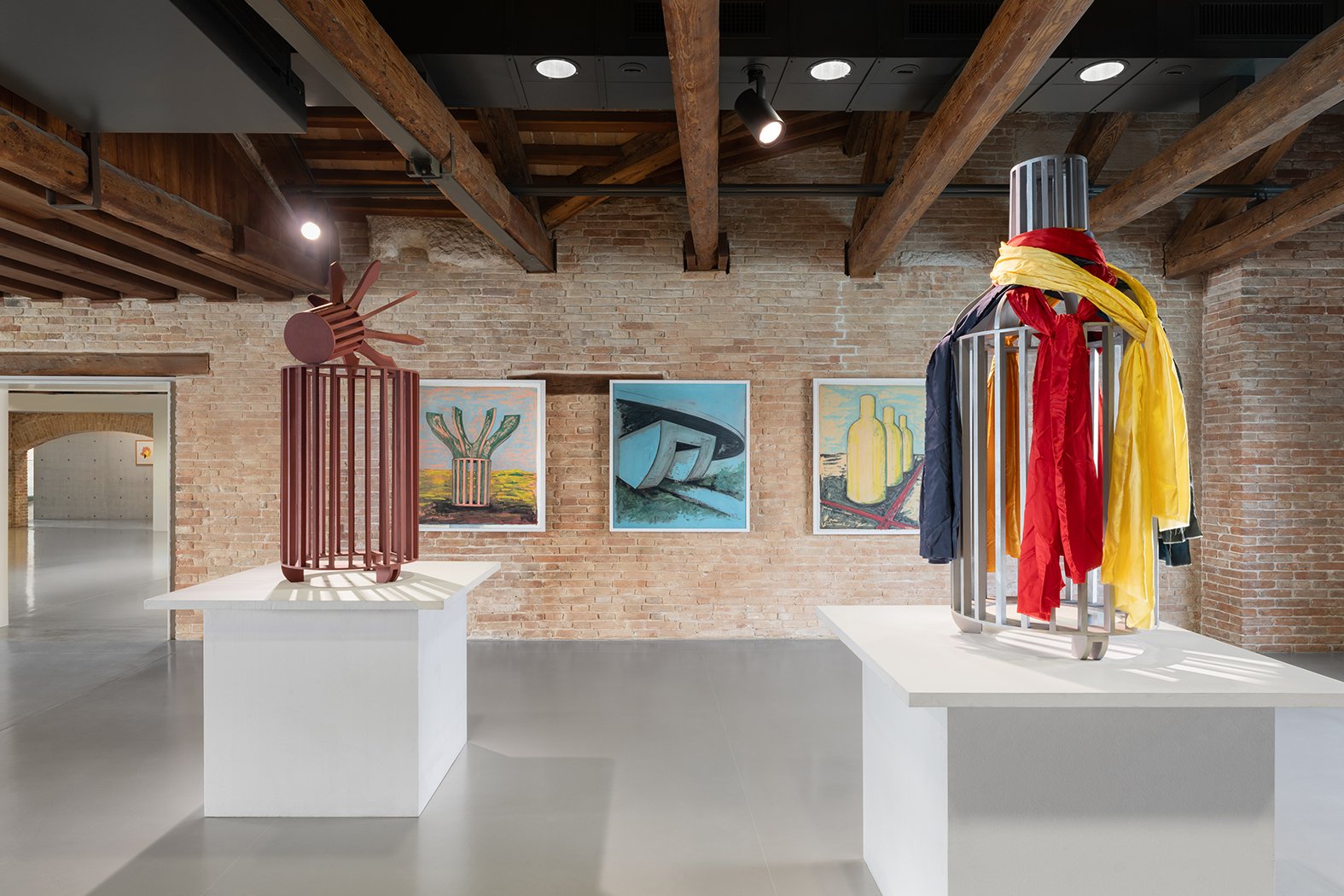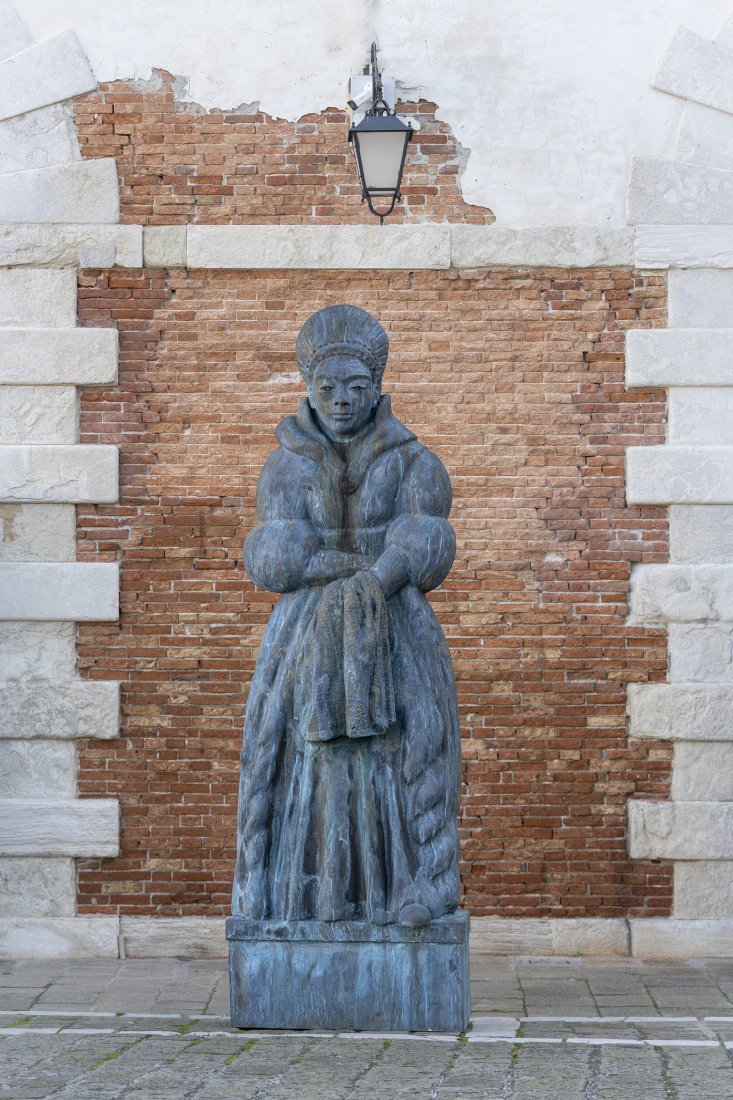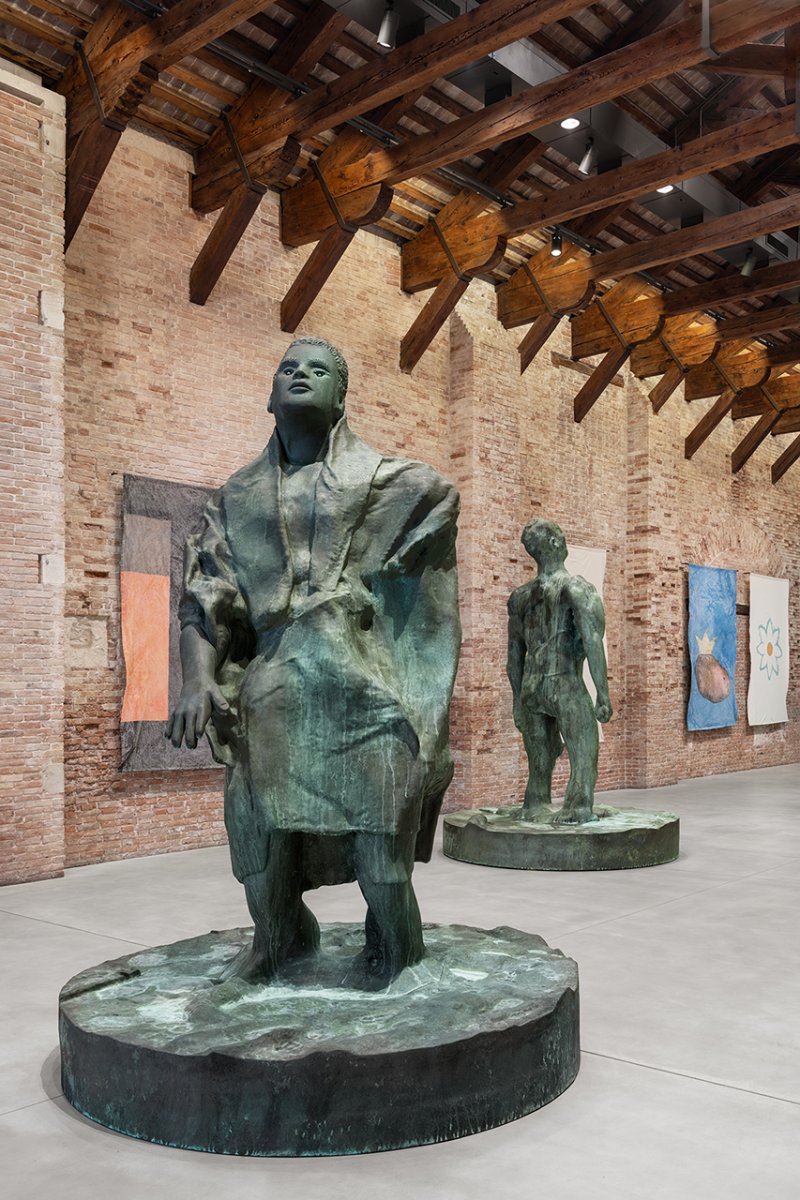
"Everything starts with paper" Thomas Schütte
Conversation between Thomas Schütte and Camille Morineau
[...]
To my question about the genealogy of his drawing practice, Schütte answers matter-offactly. “I was 13, I learned technical drawing in a three-week course in the school holidays. My uncle was an architect, when calculating square meters wasn’t so easy, and my father was an engineer. Even at that time, at a very young age, I could read plans. I have been drawing since I was 16. The first work of art I made was some kind of Surrealist or Jugendstil drawing, with dots in the style of [Aubrey] Beardsley, so open that you could see a lot of things (faces), a work that I still have, and this I did for my application to Kunstakademie in Düsseldorf and they took me.” While he was still in art school, the large drawing Amerika (1975) was a turning point. “It was my one and only and last performance. Eight hours a day for five days, it was public, during the school’s exhibition in February. I photographed it as I sat during the cigarette break every hour. I found the original pencil. With this protocol for frottaging a wall-sized piece of paper, I could calculate the time. I wanted to sell the thing for 2000 DM and spend six weeks in New York, but I didn’t have to: two years later they gave me a grant so I went to New York without having to sell the piece.”
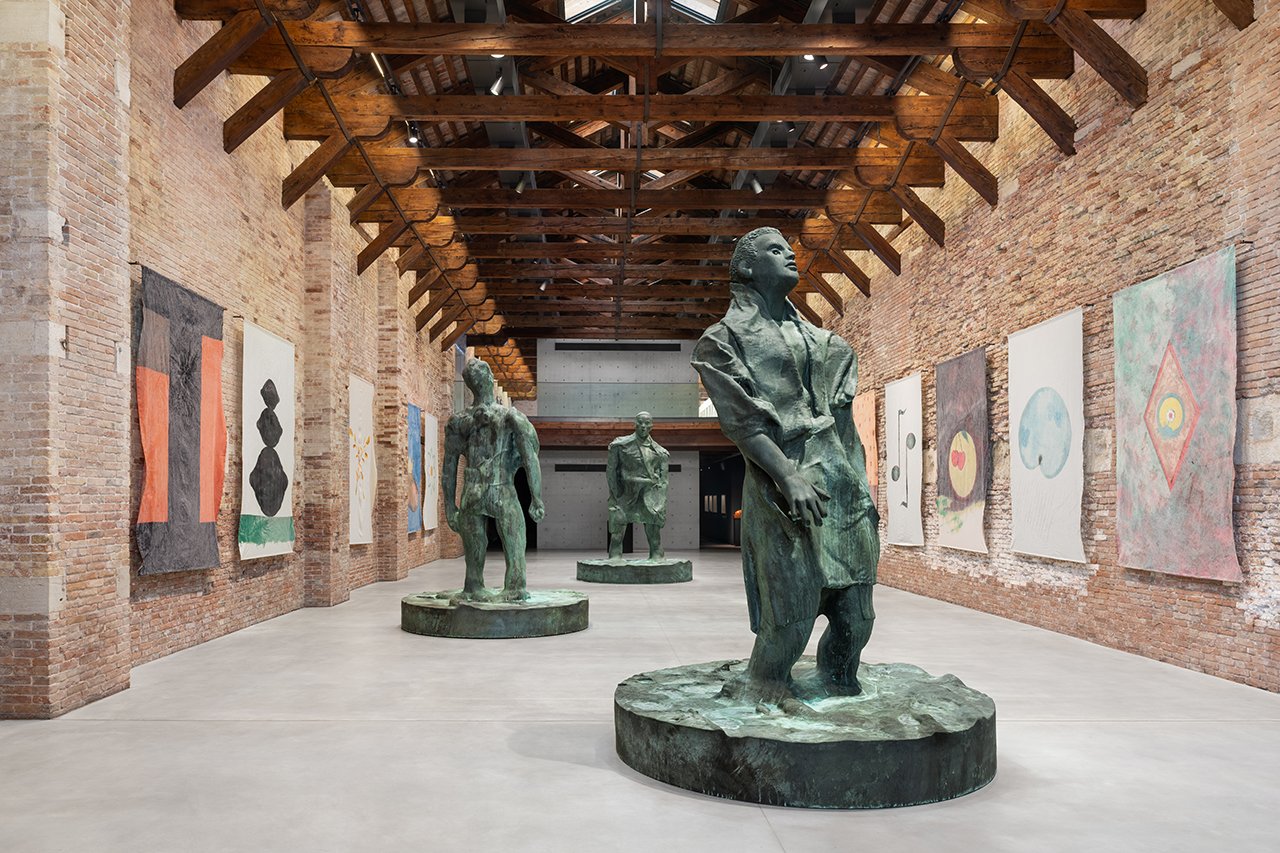
To my remarks that drawing seems to be always on his mind (there is in fact always the moment in our conversation where Schütte says “I can’t draw,” or “I wish I could draw again,” or “I can do nothing but draw,” and early on in 1987 he said: “Sketches and notes are the actual humus”18), he avoids the subject and gets back to technique and process. “In 1984, I stopped the lacquers and started the watercolors. Lacquer and varnish and spray are poisonous (painters know that, and that oil color is not). I knew this—but at the time I used other poisons such as too much alcohol, coffee and cigarettes… So anyway, I started actually with found writing paper, with a letterhead on the other side. It was thick and good quality paper. If you treat watercolors well they can last a long time. After very long research, I found the most expensive, Arches Bütten, which I tear into sheets: this is the preparation I do in the morning. I also work a long time on the pencils. There are ten grades of the soft, eight of the hard, I’ve tried all of them (they last minimum fifty years). As for the process, although I make most of my works with other people around me (producing ceramics and bronze sculptures needs a team), the drawings I do completely alone—with some music. Except when I am drawing another person, which is really an adventure and even a mission impossible.”
When I remark that each drawing is extremely complex and at the same time seems obvious, done as if without thinking about it, he replies: “It’s so simple I feel stupid to have to explain. If you want a steak with tomato you have to perform simple gestures. It’s like a recipe—wash, peel, salt, cut, etc. Drawing is a very relaxing way to spend time. Like making a meal for somebody. To make something look easy is a hard work and tons of luck—and discipline, not to do too much and spoil the whole thing. With paper what is interesting is that what is on the sheet, you can’t get it off easily. In a painting you can take the color off (not with oil color), you can overpaint. Not in a watercolor.”
To attempt a conclusion, I will quote one of the questions I wrote down: How should we look at them? “Ideally,” Thomas replied also in writing, even though I was right in front of him, “one should touch them, pick them up.”
[…]
(1) Thomas Schütte: Aquarellen, ed. Ulrich Loock (Amsterdam: Museum Overholland, 1987).
Excerpts from the catalogue of the exhibition "Thomas Schütte. Genealogies" at Punta della Dogana
